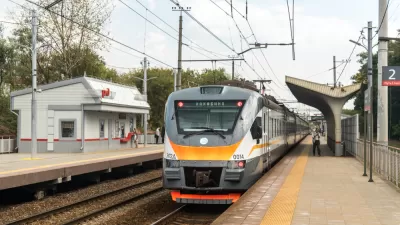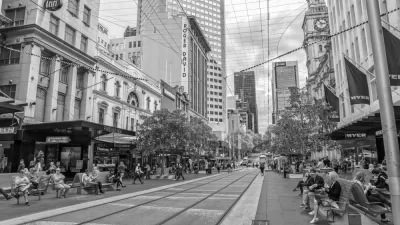A new report by Danish firm Gehl Architects presents recommendations for transforming car-cluttered Moscow. A compact city center along with a strong desire for change are potential building blocks for a human-friendly and sustainable city.
“According to the team at Gehl, Moscow is currently undergoing a sweeping transformation in order to become more liveable and sustainable,” writes Stine Behrendtzen.
While the city has many assets, such as a compact center and generous parklands, Moscow is a long way from achieving the walkable, socially-thriving streets and squares found in many of its Western-European counterparts. The report ‘Moscow – Towards a great city for people,’ which was recently presented to Moscow mayor Sergey Sobyanin, makes a number of key recommendations for the city’s makeover, including the transformation of canal- and river-sides from parkways to parkland.
“According to Gehl Architects’ Project Manager, Solvejg Reigstad, the rivers and canals in Moscow hold great recreational potential,” notes Behrendtzen. “Unfortunately most of the waterfront near the city center is currently surrounded by heavy traffic. 93 percent of the space is allocated to cars, creating a barrier between the city and the river. The roaring traffic makes it a noisy place that discourages people from lingering and promenading.”
“By gradually improving the most vital parts of the city center – such as the waterfront, selected main-streets and parks – and using the same recipe on similarly challenged areas, a gradual improvement can occur – and spread.”
FULL STORY: Towards a reinvigorated Moscow

Study: Maui’s Plan to Convert Vacation Rentals to Long-Term Housing Could Cause Nearly $1 Billion Economic Loss
The plan would reduce visitor accommodation by 25,% resulting in 1,900 jobs lost.

North Texas Transit Leaders Tout Benefits of TOD for Growing Region
At a summit focused on transit-oriented development, policymakers discussed how North Texas’ expanded light rail system can serve as a tool for economic growth.

Why Should We Subsidize Public Transportation?
Many public transit agencies face financial stress due to rising costs, declining fare revenue, and declining subsidies. Transit advocates must provide a strong business case for increasing public transit funding.

How to Make US Trains Faster
Changes to boarding platforms and a switch to electric trains could improve U.S. passenger rail service without the added cost of high-speed rail.

Columbia’s Revitalized ‘Loop’ Is a Hub for Local Entrepreneurs
A focus on small businesses is helping a commercial corridor in Columbia, Missouri thrive.

Invasive Insect Threatens Minnesota’s Ash Forests
The Emerald Ash Borer is a rapidly spreading invasive pest threatening Minnesota’s ash trees, and homeowners are encouraged to plant diverse replacement species, avoid moving ash firewood, and monitor for signs of infestation.
Urban Design for Planners 1: Software Tools
This six-course series explores essential urban design concepts using open source software and equips planners with the tools they need to participate fully in the urban design process.
Planning for Universal Design
Learn the tools for implementing Universal Design in planning regulations.
City of Santa Clarita
Ascent Environmental
Institute for Housing and Urban Development Studies (IHS)
City of Grandview
Harvard GSD Executive Education
Toledo-Lucas County Plan Commissions
Salt Lake City
NYU Wagner Graduate School of Public Service





























